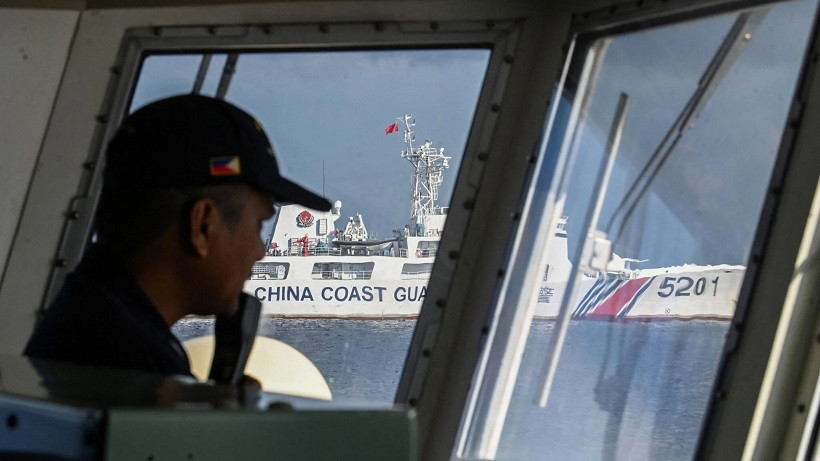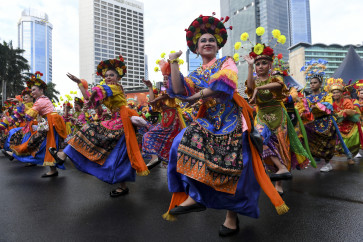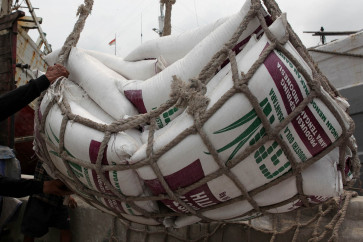Popular Reads
Top Results
Can't find what you're looking for?
View all search resultsPopular Reads
Top Results
Can't find what you're looking for?
View all search resultsChina’s fluctuating lines in South China Sea need handling
The international community is surely expecting China to lead by example and start implementing such a commitment by drawing a fixed and consistent map according to the international law.
Change text size
Gift Premium Articles
to Anyone
I
n 1948, the Boundary Department of the Ministry of Interior of the Republic of China issued a map that showed an 11-dash line in the South China Sea. The good relationship between China and Vietnam in the 1950s resulted in the deletion of two of the dashes in the Gulf of Tonkin by Mao Zedong and Chinese Premier Zhou Enlai.
An island called Bach Long Vi (now Haiphong City, Vietnam) was handed over from China to Vietnam in 1957. The number of dashes was, thus, reduced to nine. This nine-dash line map was later attached to the letter from China’s Permanent Mission to the United Nations dated May 7, 2009 responding to the submission by Vietnam to the Commission on the Limits of the Continental Shelf concerning Vietnam’s continental shelf beyond 200 nautical miles.
Subsequently, in June 2014, the Hunan Map Publishing House published a new map known as “the vertical map of China” where the number of the dashes in the line increased to 10. Compared with the nine-dash line map, the 10-dash line map shows an extra line on the east side of Taiwan.
Interestingly, the Arbitral Tribunal of the South China Sea Arbitration throughout three years of proceedings never mentioned this 10-dash line map. The tribunal, rather, discussed the nine-dash line map extensively and decided in 2016 that the nine-dash line unilaterally claimed by China based on historic rights is “contrary to the UNCLOS [UN Convention on the Law of the Sea] and without lawful effect”.
Just recently, on Aug. 28, China’s Ministry of Natural Resources posted a map with a 10-dash line in the South China Sea.
So here we have, in historical order, 11- to nine- to 10- to nine- to 10-dash line maps.
Other than the inconsistent number of the dashes in the lines, there are three other inconsistencies. First, the length of each line; second, the location of the line and; third, the distance of the lines to the coast of adjacent countries.
The United States Department of State’s publication called Limits in the Sea No. 143 China: Maritime Claims in the South China Sea points out these inconsistencies through a single map where the three versions of lines, the nine, the 10 and the 11 are drawn together. It would be great if other countries independently assessed the consistency of the 9-/10-/11-dash line maps cartographically and published the results for the purpose of fairness and objectiveness.
What do these fluctuating maps mean to the international community? The best we can do is to appreciate them as pieces of art, nothing further.
President Xi Jinping once stated that China is ready to “stand guard over the world order based on international law”. The international community is surely expecting China to lead by example and start implementing such a commitment by drawing a fixed and consistent map according to the international law that governs the ocean namely the UNCLOS, to which China is a party. Included in this context are decisions delivered by UNCLOS-based dispute-settlement mechanisms, for instance the 2016 South China Sea arbitration.
The UNCLOS requires each of its signatories to publicize its maritime border(s) in charts or geographical coordinates on a scale or scales adequate for ascertaining their position. Further, this should be deposited with the UN secretary-general and the secretary-general of the International Seabed Authority, particularly for the outer limit of the continental shelf. Maps with changing dash-lines without coordinates provide no certainty and possess no legal authority.
At the moment, diplomatic protests against China’s newly released map are the best quick response. It is also a manifestation of persistent objection, one thing that is so important in international law and politics. Nevertheless, countries should not be wholly diverted from the real challenges, namely the construction of artificial military islands and the exercise of jurisdiction and control in the South China Sea. These are the two real threats that will disrupt rule-based order and international law.
This period of time is a crucial moment for Indonesia as the 2023 chair of ASEAN. After two consecutive water cannon incidents by the Chinese coast guard against the Philippines (Aug. 5) and Vietnam (Aug. 28), as well as the continuous building of artificial islands in the South China Sea, it is worth at least listening to the faint voices doubting the South China Sea Code of Conduct (CoC) in the view of seeking a new, innovative and firm solution.
Any effort to secure peace and stability in the South China Sea, including but not limited to the development of the CoC, joint naval drills and joint patrols, should be supported and strengthened.
Aside from the ASEAN mechanism, bear in mind that the South China Sea “belongs” to the international community as a whole, and initiatives from countries outside the region to bolster the security and stability of the region should be encouraged.
One common issue of ASEAN countries is the lack of adequate security assets, including, but not limited, to patrol vessels. On top of that, the budgets to keep the security assets running appear to be limited.
Thus, future international cooperation should touch upon this particular aspect in addition to the longstanding practice of international cooperation in security such as tabletop exercises, joint training and joint patrols.
***
The writer is cofounder and senior advisor on maritime security at Indonesia Ocean Justice Initiative.










